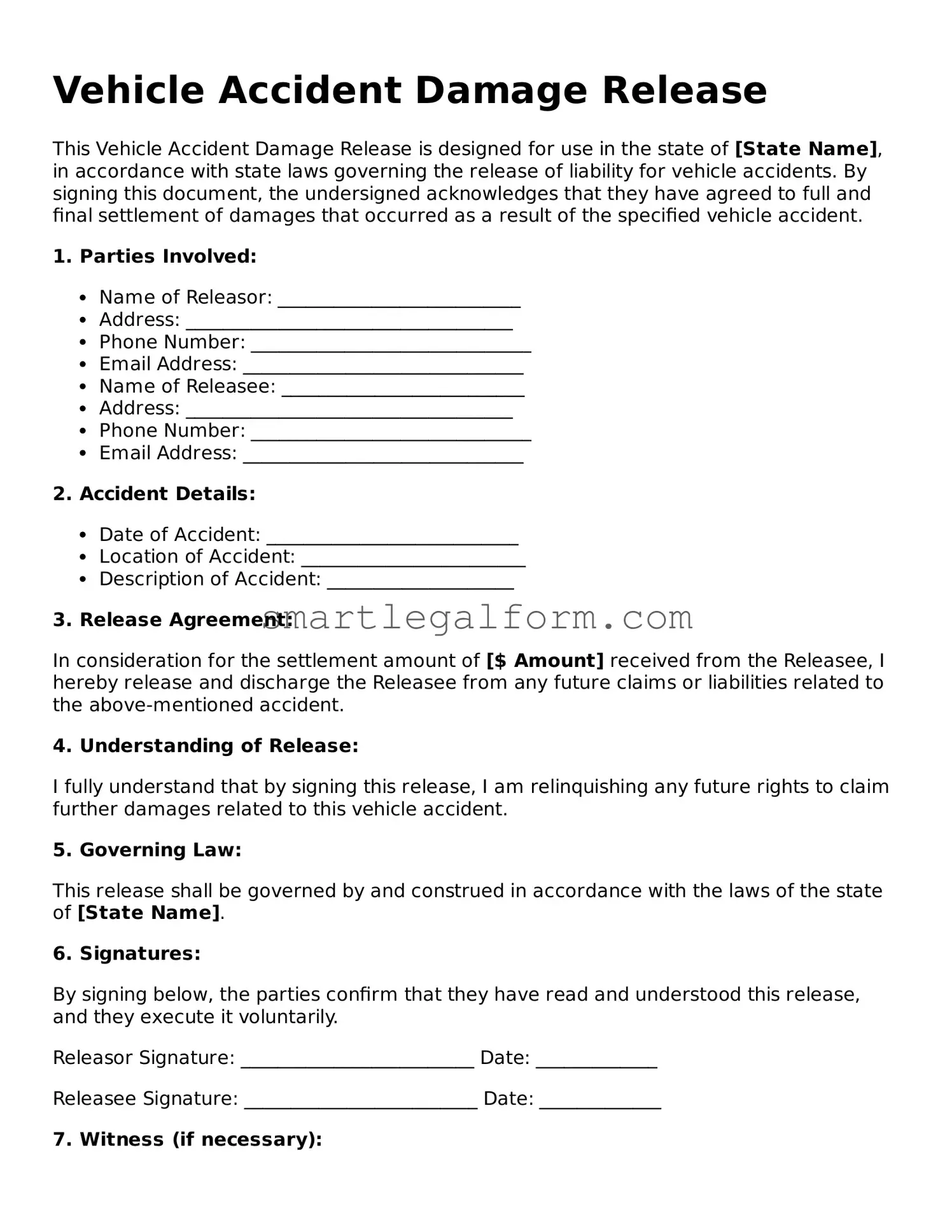Vehicle Accident Damage Release
This Vehicle Accident Damage Release is designed for use in the state of [State Name], in accordance with state laws governing the release of liability for vehicle accidents. By signing this document, the undersigned acknowledges that they have agreed to full and final settlement of damages that occurred as a result of the specified vehicle accident.
1. Parties Involved:
- Name of Releasor: __________________________
- Address: ___________________________________
- Phone Number: ______________________________
- Email Address: ______________________________
- Name of Releasee: __________________________
- Address: ___________________________________
- Phone Number: ______________________________
- Email Address: ______________________________
2. Accident Details:
- Date of Accident: ___________________________
- Location of Accident: ________________________
- Description of Accident: ____________________
3. Release Agreement:
In consideration for the settlement amount of [$ Amount] received from the Releasee, I hereby release and discharge the Releasee from any future claims or liabilities related to the above-mentioned accident.
4. Understanding of Release:
I fully understand that by signing this release, I am relinquishing any future rights to claim further damages related to this vehicle accident.
5. Governing Law:
This release shall be governed by and construed in accordance with the laws of the state of [State Name].
6. Signatures:
By signing below, the parties confirm that they have read and understood this release, and they execute it voluntarily.
Releasor Signature: _________________________ Date: _____________
Releasee Signature: _________________________ Date: _____________
7. Witness (if necessary):
Witness Name: ____________________________
Witness Signature: _________________________ Date: _____________
